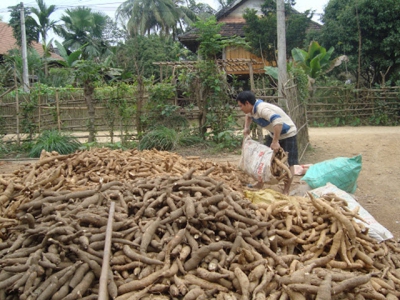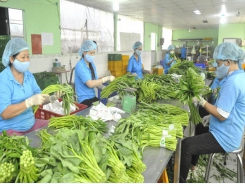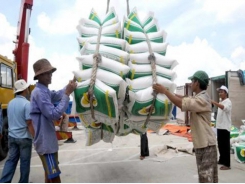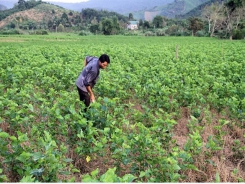Việt Nam sees cassava export reduction in two months of 2020

HÀ NỘI – Việt Nam witnessed a slight reduction in cassava exports during the first two months of this year due to the novel coronavirus (COVID-19) epidemic, according to the Ministry of Agriculture and Rural Development.
Việt Nam's cassava exports fell by 0.16 per cent in value during the first two months this year. Photo baolaocai
In the first two months of 2020, cassava exports reached 383,000 tonnes, earning US$127 million, down 0.06 per cent in volume and 0.16 per cent in value over the same period last year. Of which, exports in February totalled 171,000 tonnes, earning $54 million.
The average export price of cassava was estimated at $332 per tonne in the first two months, a year on year reduction of 10 per cent.
In terms of product structure, fresh cassava chip exports were estimated at 130,000 tonnes, earning $27 million, up 39.6 per cent in volume and 72.2 per cent in value over the same period last year.
Cassava starch exports were estimated at 253,000 tonnes in volume and $101 million in value. The export volume fell by 19.5 per cent year on year but the export value rose by 25.6 per cent.
China continued to be the largest market for Vietnamese cassava, accounting for 93 per cent of total cassava exports in the first two months. However, the cassava exports to China decreased by 21.1 per cent in volume and 25.1 per cent in value over the same period of last year.
Due to the COVID-19 epidemic, China has extended the closure of border markets and continued to suspend the trading activities of border residents. That has had a great impact on the cassava exports from Việt Nam to China, the ministry said.
Next months, the cassava exports to China will continue to be quiet because China’s cassava demand is not expected to increase during the epidemic.
Nguyễn Quốc Toàn, director of MARD's Agricultural Product Processing and Market Development Department, predicted this year cassava exports from Việt Nam to China will face fierce competition from other countries such as Thailand, Cambodia and Laos.
In addition, China has strengthened strict control on labelling, packaging and border trade, Toản said. Meanwhile, China this year will continue to reduce the value-added tax on imported cassava starch from 13 per cent to 10 per cent to encourage imports via contracts to China.
However, Toản said Việt Nam would have opportunities to boost cassava export to China because Chinese enterprises have little cassava inventory and the US alcohol supply for this market has reduced due to the high import duty of 45 per cent.
On the other hand, China would increase demand for ethanol to 10 million tonnes this year, so it increases imports of cassava chips.
According to Nguyễn Văn Lạng, chairman of the Việt Nam Cassava Association, the output of raw cassava in the 2019-20 crop is expected to decrease by 50 per cent compared to the previous crop due to the disease of cassava trees.
That has led to lack of raw cassava material and also lower quality of this material, Lạng said. The cassava production industry needs to control varieties of cassava to reduce the disease and improve quality.
In addition, the association has proposed to the ministry and localities to manage cassava development planning, supplying enough cassava for the domestic market.
According to the association, Việt Nam now has 120 cassava starch processing factories with a total capacity of over 15.5 million tonnes, while the total annual output of 8.8 million tonnes of fresh cassava.
The shortage of material has led many cassava processing enterprises to face difficulties in processing and business.
In 2019, the cassava exports reached 2.5 million tonnes in volume and $973 million in value. The exports rose by 3.2 per cent in volume and 1.6 per cent in value compared to 2018.
The cassava exports to mainland China accounted for 89.2 per cent of Việt Nam's total cassava exports. Following was South Korean, Taiwan, Malaysia and the Philippines.
Related news
Tools

Phối trộn thức ăn chăn nuôi

Pha dung dịch thủy canh

Định mức cho tôm ăn

Phối trộn phân bón NPK

Xác định tỷ lệ tôm sống

Chuyển đổi đơn vị phân bón

Xác định công suất sục khí

Chuyển đổi đơn vị tôm

Tính diện tích nhà kính

Tính thể tích ao



 Viet Nam enhances rice, pork price stabilisation
Viet Nam enhances rice, pork price stabilisation  Breeders to raise high-yield silkworms, reduce Chinese imports
Breeders to raise high-yield silkworms, reduce Chinese imports